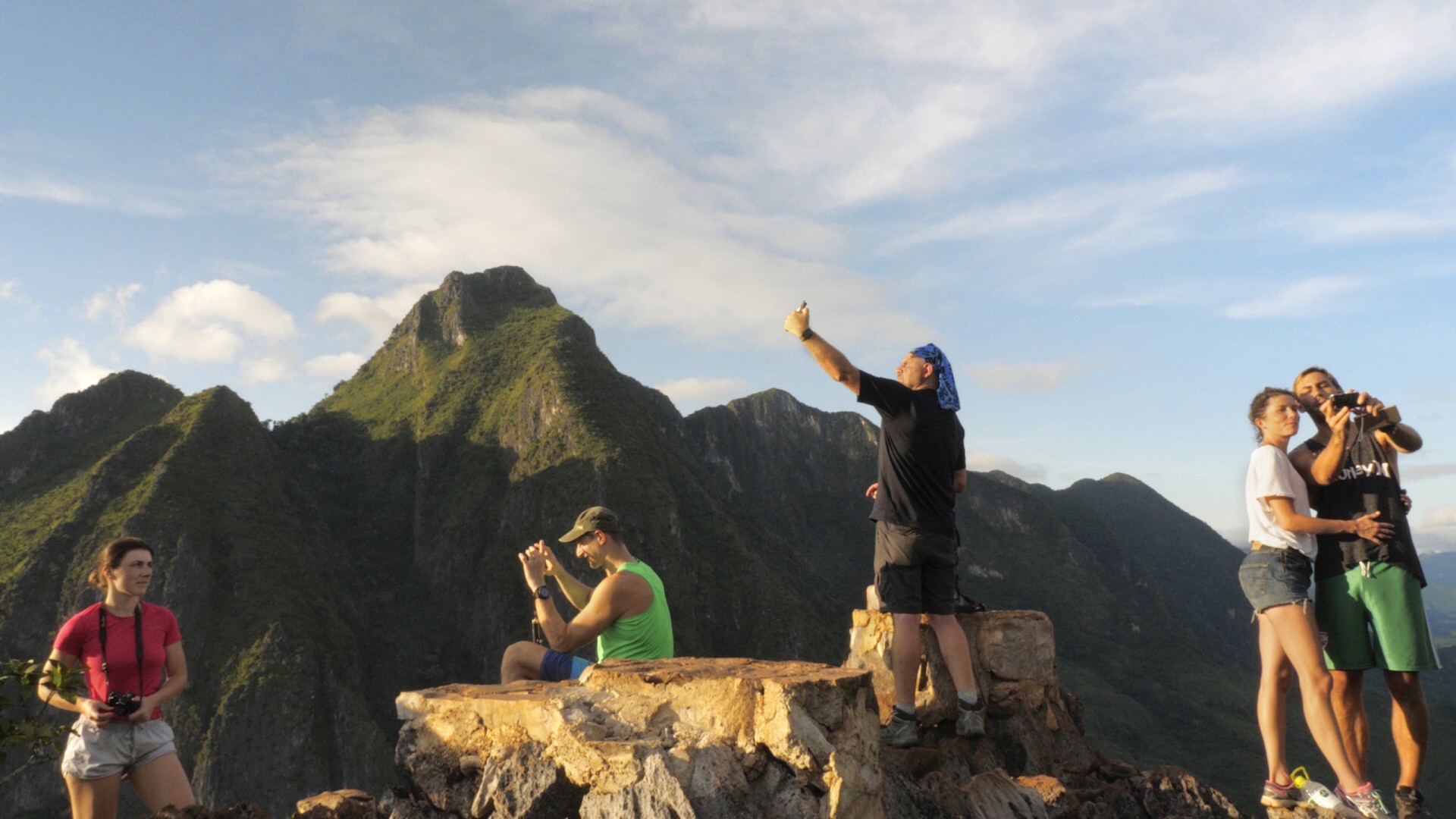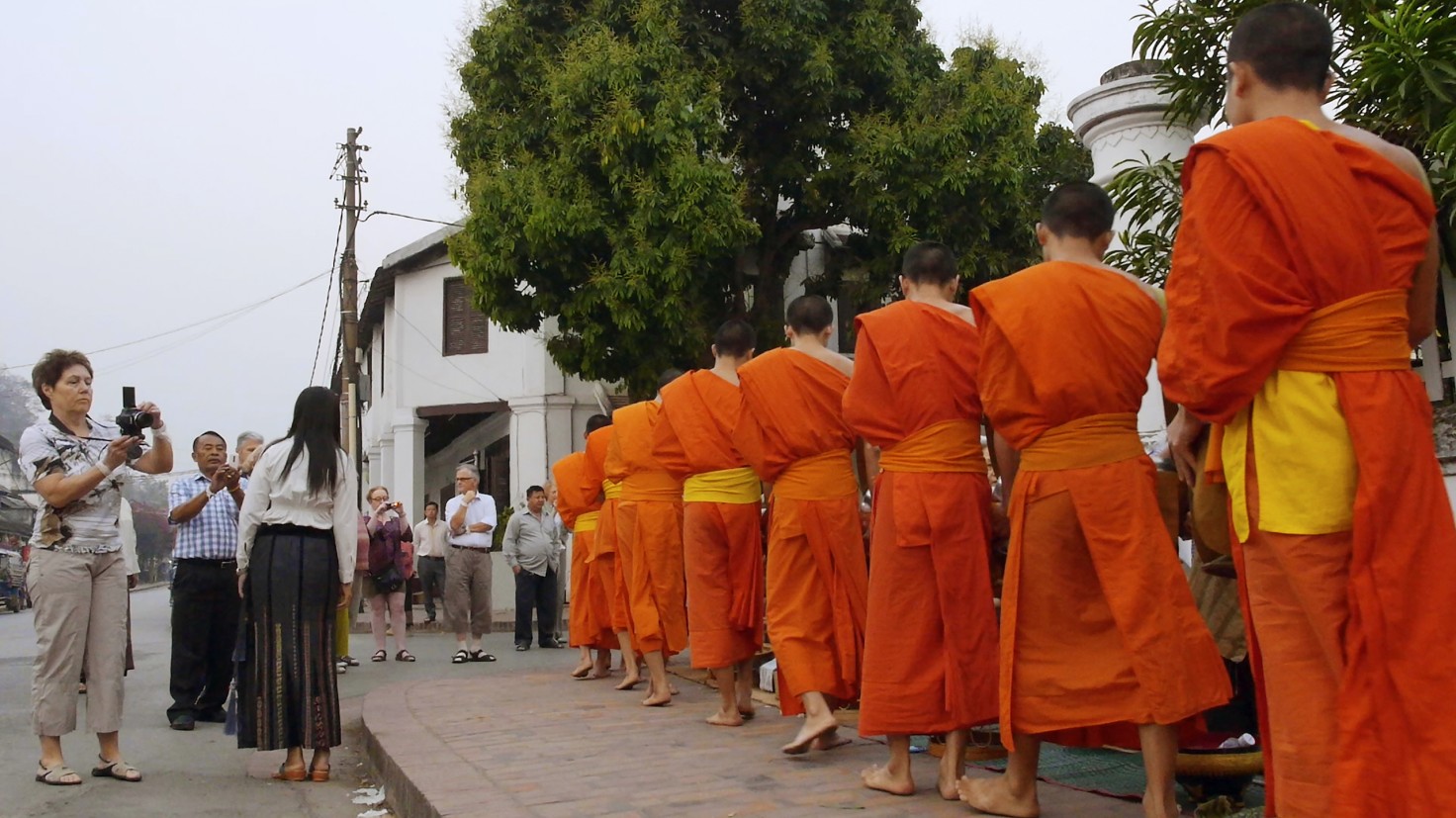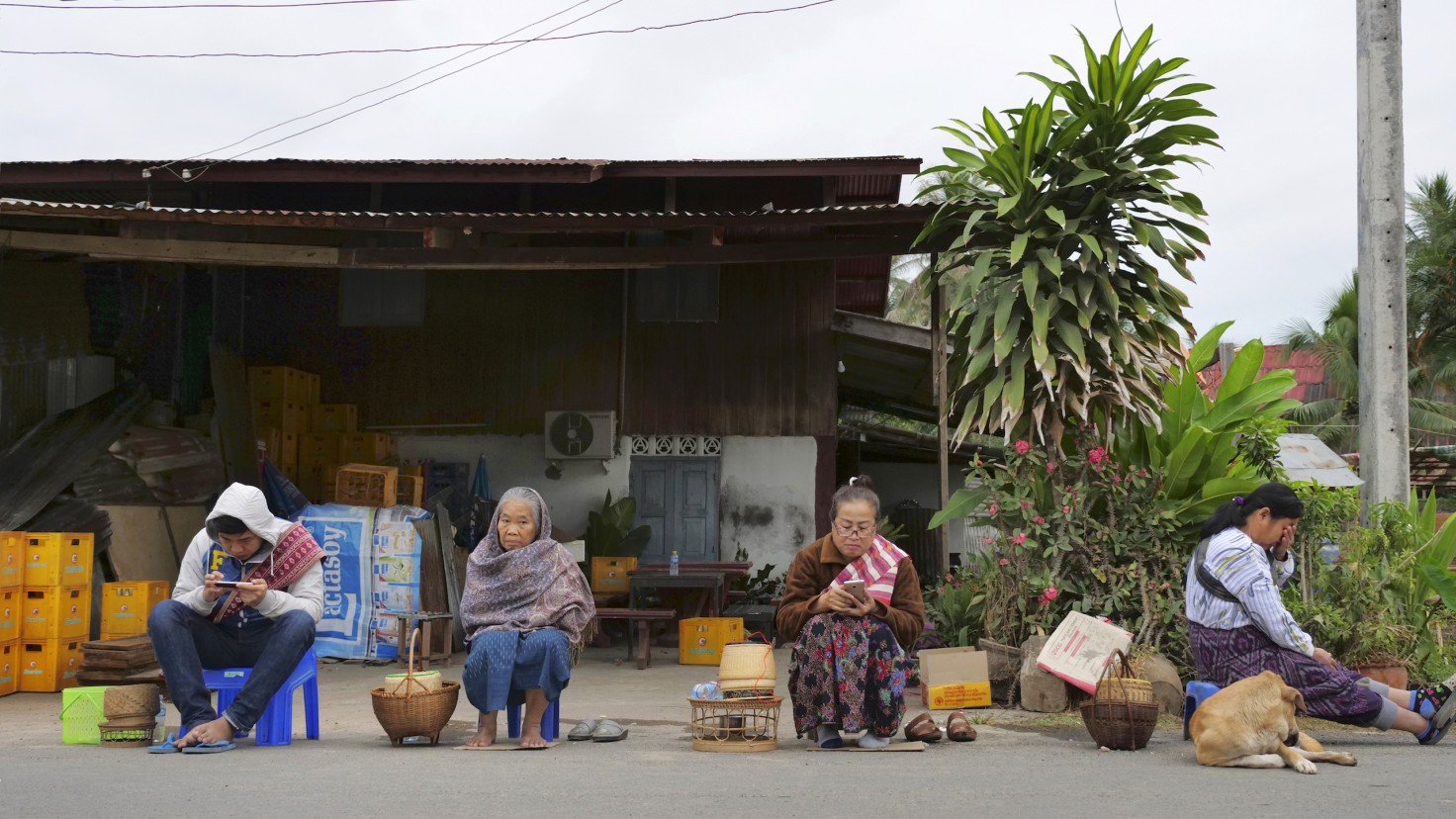Since 2002, she has crafted a series of winding, poetic travelogues—amid myriad other works—each anchored in an exploration of what it means to “look cross-culturally.” With her fourth installment, Onlookers (2023), she offers her clearest and most adept distillation of this guiding premise.
Tracing its way through Laos, the film sets its sights on the endless stream of tourists—those often awkward, and at times ignorant, interlopers who traipse through the country’s rivers, markets, and sacred structures. Frequently, they veer just a little too close to passing monks and vendors, like omnipresent specters among locals bold enough to be minding their own business in public. Watching these clumsy antics, I’m reminded of A Small Place, Jamaica Kincaid’s lyrical treatise on the neocolonial nature of the tourism industry: “You make a leap from being that nice blob just sitting like a boob in your amniotic sac of the modern experience to being a person visiting heaps of death and ruin and feeling alive and inspired at the sight of it.”
Throughout Onlookers, Takesue—who lensed, edited, and produced the project, along with co-producers Richard Beenen and Sophie Luo—utilizes wide, fixed angles. Working with a small camera, often set on the ground near popular landmarks, she creates a dynamic where others tend to enter or cross through her shots over time, some more harmoniously than others. The result is a series of slow-moving tableaus that sit with the tensions of negotiating space in a world increasingly defined by consumption. Audiences are invited to bear witness to this messy inequity, the camera patiently observing fellow travelers as they feign carefree enjoyment and shirk most definitions of personal space.


